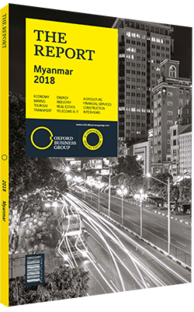Kamalkant Agarwal, Head of International Banking Business, Siam Commercial Bank: Interview

Interview: Kamalkant Agarwal
Two decades after the Asian financial crisis, is the ASEAN banking sector prepared for future shocks?
KAMALKANT AGARWAL: In the aftermath, the financial systems of affected countries were reformed. As a direct consequence, today they have floating exchange rates, less reliance on short-term foreign currency debt and much more transparent financial systems which, in my opinion, is perhaps the most important legacy of the Asian financial crisis. Today, most people borrow from a strong banking system and well functioning bond market and are far less reliant on US dollar borrowings. Significant improvements have been made across the region and I think ASEAN banks today are much stronger than in the past. Singaporean banks are a great example and Thai, Malaysian and Indonesian banks are all well capitalised. After 1997 regional central banks also improved their supervision, making sure that balance sheets remain clean.
What lessons can Myanmar learn from its ASEAN peers to develop a more robust financial system?
AGARWAL: Myanmar has recently opened to the world and it will need time to fully develop its financial system. Just like its regional peers after the crisis, I am confident that Myanmar will be able to reform its financial sector. It can learn from other countries’ past experiences because they went through some of the same problems.
In Myanmar, it is first crucial to reduce the amount of overdraft lending. Even considering that every company requires a certain amount of overdraft borrowing, it cannot be the primary method of borrowing for local businesses. In addition, the regulator will need to keep a much sharper eye on intra-group lending. Every country has gone through problems related to this and if Myanmar does not control these transactions, it, too, may face painful issues. Furthermore, Myanmar needs to improve the transparency of its financial system. The damage from the 1997 financial crisis would have been much less had transparency levels been higher.
Myanmar’s 28 banks will likely have to consolidate their operations to have enough capital to support the industries the country is trying to build up. We already see some positive signs on this front, particularly after the enactment of the financial institutions law in 2016, which was an important milestone for the sector.
How will state-owned banks contribute to the mobilisation of domestic savings in the economy?
AGARWAL: The first step is to improve the capital ratios of these banks. They will also need to upgrade their governance models, but this is not an easy process. There are many cases across Asia where the banking system is dominated by state-owned institutions; in many countries, government banks have around 60% of the market share. As experience demonstrates, improving the governance of these institutions is a tremendous challenge because it takes time and some internal resistance to overhaul internal procedures and practices and improve efficiency. In India, the government found a solution to push reform within public banks by issuing more private bank licences and increasing the competitiveness of the financial market. That is also starting to take place in Myanmar because, despite the market being dominated by state-owned banks, growth has been much faster among private banks.
Greater mobilisation of capital into the economy will also come with the liberalisation of the banking sector and the development of a bond market to channel the savings of individuals into the corporate sector. This would also aid long-term financing. In this process, foreign banks can play a key role in mobilising resources into productive areas of the economy. Foreign banks generally focus their activities on supporting foreign firms investing in Myanmar and lending to large local companies. The rest of the market is left almost entirely to local banks, which support the growth of small and medium-sized entities. In Myanmar, some 70% of financing is still coming from businessmen’s own pockets.
You have reached the limit of premium articles you can view for free.
Choose from the options below to purchase print or digital editions of our Reports. You can also purchase a website subscription giving you unlimited access to all of our Reports online for 12 months.
If you have already purchased this Report or have a website subscription, please login to continue.

